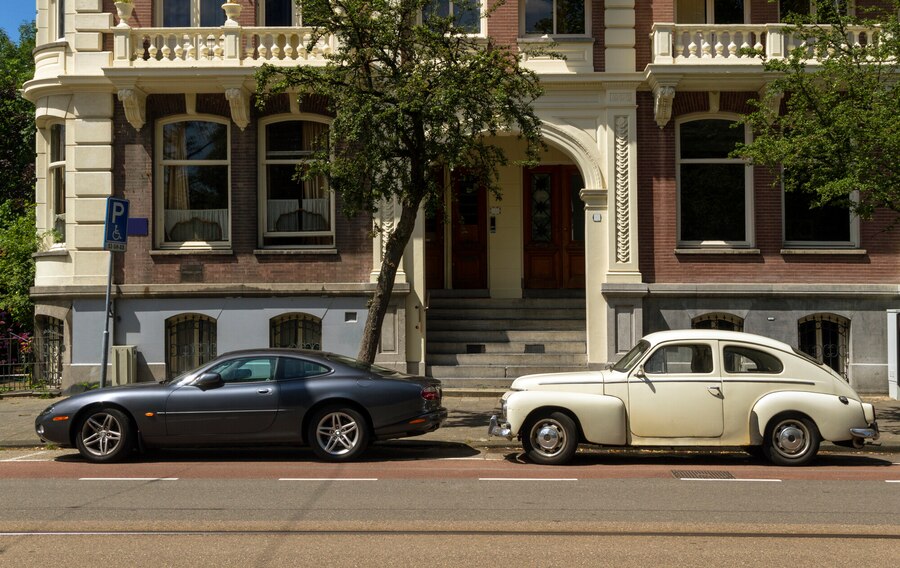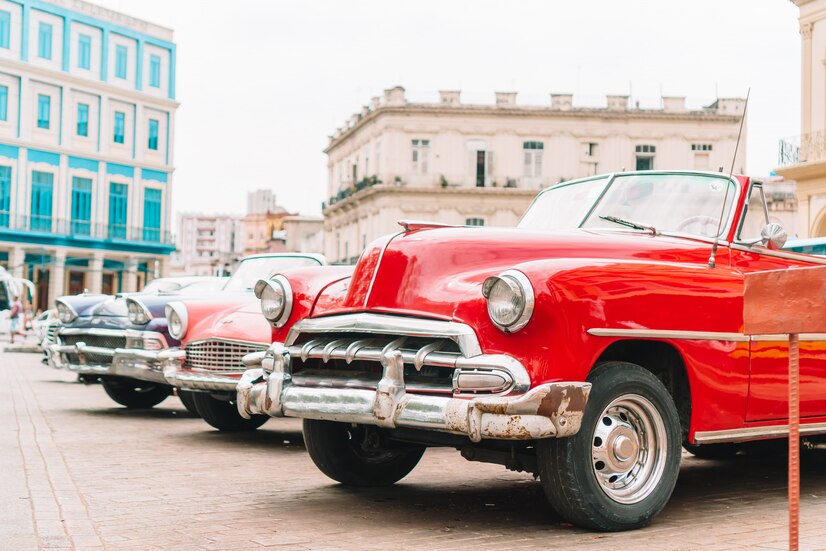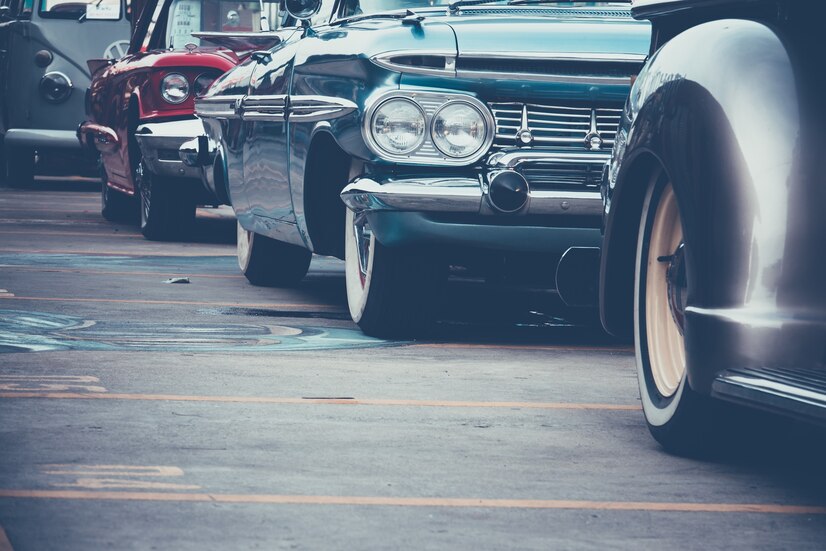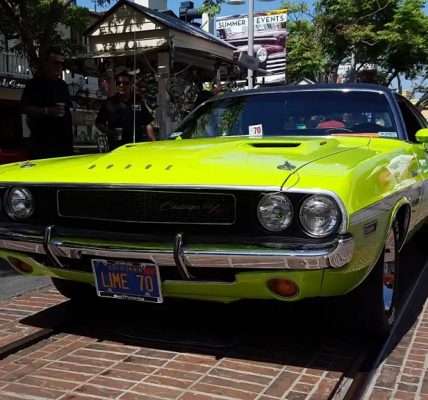Imagine strolling down a street lined with cars that seem to have defied the hands of time. Each one has a story to tell, a history that echoes through its design and engineering. Classic and vintage cars hold a special place in the hearts of automotive enthusiasts and collectors. They embody nostalgia, craftsmanship, and a bygone era of automotive excellence. In this article, we will delve into the difference between classic and vintage cars, exploring the nuances that set them apart and define their significance.
Difference Between Classic and Vintage Cars
The key differences between classic and vintage cars:
| Feature | Classic Car | Vintage Car |
| Age | At least 20 years old but not older than 45 years | 25 years or older |
| Historic significance | May or may not have historic significance | Typically has historic significance |
| Design elements | Often reflects the style of the era in which it was built | Typically has more unique and distinctive design elements |
| Value | Can be valuable, but typically not as valuable as vintage cars | Can be very valuable, especially if it is in good condition and has historical significance |
| Popularity | Popular among car enthusiasts and collectors | Very popular among car enthusiasts and collectors |
Defining Classic and Vintage Cars: A Brief Overview
When we think of classic cars, we conjure images of sleek, elegant automobiles that hark back to a different era. Classic cars are more than just vehicles; they are cultural artifacts that encapsulate the essence of their time. What distinguishes a car as “classic” is not solely its age but a combination of factors contributing to its historical and cultural significance. One of these factors is vehicle performance, which can greatly influence a car’s overall appeal and influence on its time period.
Characteristics of Classic Cars
Classic cars are characterized by their timeless design, exceptional craftsmanship, and enduring appeal. These vehicles showcase artistry and attention to detail that sets them apart from modern counterparts.
Age Criteria for Classic Cars
While age is a factor in determining whether a car is considered classic, it’s not the sole criterion. Generally, cars at least 20 to 30 years old are classified as classics. However, it’s important to note that different organizations and jurisdictions might have slightly varying age thresholds.
Iconic Examples of Classic Cars
Think of the Ford Mustang, the Chevrolet Corvette, or the Volkswagen Beetle. These are just a few classic cars that have left an indelible mark on automotive history. They represent different eras and embody the spirit of their times.
Historical Significance of Classic Cars
Classic cars are not just modes of transportation; they are windows into the past. They carry the stories of their creators, the cultures they emerged from, and the technological advancements of their time.
Nostalgia and Cultural Impact
The allure of classic cars goes beyond their mechanical attributes. They evoke nostalgia, transporting us to a time we might not have experienced firsthand. They remind us of simpler times and the values of days gone by.

How Classic Cars Shaped Automotive History
Classic cars have played a pivotal role in shaping the automotive landscape. From design innovations to engineering breakthroughs, these vehicles have left an indelible mark on the history of automobiles.
While classic cars encompass many vehicles, vintage cars occupy a more specific niche. Vintage cars are not just old; they are representatives of a particular era marked by distinctive design, engineering, and cultural influences.
What Sets Vintage Cars Apart
Vintage cars stand out for their rarity, historical significance, and unique design features. They provide a glimpse into a bygone era of automotive design and engineering.
Rarity and Age of Vintage Cars
Vintage cars are typically older than classic cars and are often produced between the late 1800s and the early 1930s. Their rarity adds to their appeal, as finding well-preserved vintage cars can be challenging.
Notable Vintage Car Models
Cars like the Ford Model T, the Rolls-Royce Silver Ghost, and the Duesenberg Model J are celebrated examples of vintage automobiles. These models epitomize the elegance and sophistication of their time.
Historical Context of Vintage Cars
Vintage cars emerged during a period of rapid technological advancements and societal changes. The early automotive industry was marked by experimentation and innovation.
Tracing the Evolution of Vintage Automobiles
Vintage cars offer a glimpse into the infancy of the automotive industry. These vehicles showcase the transition from horse-drawn carriages to motorized transportation.
Vintage Cars as Time Capsules of Design and Engineering
One of the most remarkable aspects of vintage cars is their ability to transport us to a time when automotive design was driven by aesthetics and engineering ingenuity.
Design and Styling
The design of classic and vintage cars is a testament to the artistry of their creators. These vehicles are more than just functional; they are expressions of creativity and style.
Classic Car Design Traits
Classic cars are known for their elegant lines, graceful curves, and attention-grabbing details. These design traits contribute to the enduring appeal of classic vehicles.
Elegance and Timeless Aesthetics
Classic cars exude an elegance that transcends trends. Their aesthetics have stood the test of time, captivating the hearts of enthusiasts across generations.
Notable Design Elements in Classic Cars
From the distinct grilles of the 1950s to the tailfins of the 1960s, classic cars feature design elements that reflect the design philosophies of their respective eras.
Vintage Car Styling Features
Vintage cars boast design features that harken back to when automobiles were handcrafted works of art. These features include intricate ornamentation and decorative detailing.
Art Deco Influences and Ornate Designs
The Art Deco movement profoundly influenced the design of vintage cars. This influence is evident in these vehicles’ sleek lines, geometric shapes, and decorative elements.
Unique Styling Cues of Vintage Automobiles
Each vintage car model has its unique styling cues that distinguish it from others. From the placement of headlights to the curvature of fenders, these cues tell a story of design evolution.
Technological Evolution

While classic and vintage cars might seem like relics of the past, they were once at the forefront of technological innovation. These vehicles pushed the boundaries of engineering and introduced groundbreaking features.
Technological Features in Classic Cars
Classic cars introduced technological features that were cutting-edge in their time. These features range from automatic transmissions to power steering systems.
Vintage Engine Technology
Vintage cars featured engines that were marvels of engineering ingenuity. These engines were designed with a focus on durability and performance.
Mechanical Innovations of Classic Cars
Classic cars brought mechanical innovations such as hydraulic brakes, independent suspension systems, and improved cooling mechanisms.
Technological Aspects of Vintage Cars
Vintage cars incorporated technologies that were revolutionary in their respective eras. These technologies contributed to the overall driving experience and safety.
Early Automotive Innovations
The early days of the automotive industry were marked by rapid experimentation. Innovations like electric starters and improved ignition systems transformed the way cars were used.
Pioneering Technological Advancements in Vintage Autos
From introducing electric lighting to implementing early entertainment systems, vintage cars were at the forefront of technological progress.
Popularity and Collectibility
The appeal of classic and vintage cars goes beyond their mechanical attributes. They have captured the hearts of collectors and enthusiasts, turning them into highly sought-after artifacts.
The Popularity of Owning Classic Cars
Owning a classic car is more than a hobby; it’s a passion. The popularity of classic cars has led to a vibrant community of enthusiasts celebrating these vehicles’ timeless charm.
Modern Enthusiasm for Classic Car Collecting
Collecting classic cars has become a significant cultural phenomenon. Enthusiasts value these vehicles for their monetary worth and the emotional connection they offer.
Factors Driving the Appeal of Classic Cars
The appeal of classic cars is driven by various factors, including nostalgia, design aesthetics, and the thrill of owning a piece of history.
Vintage Cars as Collectible Artifacts
Vintage cars are more than just modes of transportation; they are collectible artifacts that encapsulate the essence of a particular era.
Rarity and Investment Value of Vintage Automobiles
The rarity of vintage cars contributes to their investment value. Collectors are often willing to pay a premium for well-preserved vintage vehicles.
The Role of Vintage Cars in Collector Communities
Vintage cars play a pivotal role in collector communities, where enthusiasts come together to share their passion and knowledge.
Restoration and Maintenance
Restoring and maintaining classic and vintage cars is a labor of love. These vehicles require specialized care to preserve their authenticity and charm.
Restoring Classic Cars
Restoring a classic car is a journey that requires dedication, expertise, and attention to detail. The process involves reviving the vehicle to its original glory.
Challenges and Rewards of Classic Car Restoration
While classic car restoration comes with challenges, such as sourcing original parts, the rewards are immense. Bringing a piece of automotive history back to life is a gratifying experience.
Preservation Efforts to Maintain Authenticity
Preserving the authenticity of classic cars is of paramount importance. Restorers strive to retain original features and materials whenever possible.
Maintaining Vintage Cars
Vintage cars require consistent maintenance to ensure their longevity. Every maintenance aspect contributes to the vehicle’s performance from engine tuning to bodywork.
Unique Considerations for Vintage Car Maintenance
Maintaining vintage cars comes with its own set of considerations. Limited availability of parts and specialized knowledge are factors that vintage car owners must navigate.
Navigating Repairs with Limited Technological Resources
Vintage cars predate the digital age, so repairs often need to be approached with traditional techniques and mechanical expertise.
Market Trends and Values
The market for classic and vintage cars is dynamic and influenced by various factors. The value of these vehicles can fluctuate based on trends, demand, and historical significance.
Classic Car Market Trends
The market for classic cars experiences trends that shape buying and selling patterns. These trends can be influenced by popular culture and societal shifts.
Fluctuations in Classic Car Values
The value of classic cars can experience fluctuations over time. Factors such as rarity, condition, and historical importance play a role in determining their worth.
Influential Factors in Determining Classic Car Prices
Several factors contribute to the pricing of classic cars, including provenance, rarity, restoration quality, and the overall desirability of the vehicle.
Vintage Car Valuations
Valuing vintage cars requires a keen understanding of historical context, market demand, and the intricacies of the specific vehicle model.
Assessing the Worth of Vintage Automobiles
Determining the worth of a vintage car involves a combination of research, expert opinions, and an analysis of market trends.
Notable Auctions and Record-Breaking Vintage Car Sales
Auctions play a significant role in the buying and selling classic and vintage cars. Record-breaking sales often grab headlines and reflect the evolving market.
Legal and Regulatory Considerations
Classic and vintage car ownership is accompanied by legal and regulatory considerations. Understanding these regulations is essential for enjoying these vehicles on the road.
Classic Car Regulations
Many jurisdictions have specific regulations for classic cars. These regulations might encompass registration, emissions, and safety standards.
Historic Vehicle Registration and Benefits
Some regions offer special registration and benefits for historic vehicles, including reduced registration fees and exemptions from certain regulations.
Compliance with Emission Standards and Safety Regulations
Classic cars must often comply with emission and safety standards that might differ from modern vehicles.
Vintage Car Legalities
Owning a vintage car requires understanding the legal requirements specific to these vehicles, especially considering their age and unique features.
Navigating Regulations for Very Old Vehicles
Vintage cars often fall into a unique category when it comes to regulations. Navigating these regulations might require additional research and adherence to specific guidelines.
Exemptions and Requirements for Vintage Cars
Some regions provide exemptions for vintage cars from certain regulations, acknowledging their historical and cultural significance.
Cultural Impact and Representation
Classic and vintage cars have left an indelible mark on popular culture. They are often celebrated in movies, TV shows, and other forms of media.
Classic Cars in Pop Culture
These cars have become cultural icons, representing an era of elegance, style, and innovation.
Classic Cars in Movies and TV Shows
From the Batmobile to the DeLorean in “Back to the Future,” classic cars have played prominent roles in movies and TV shows.
Iconic Classic Car References
Certain classic cars have become synonymous with popular culture. Their appearances in media have solidified their status as icons.
Vintage Cars as Cultural Icons
These cars aren’t just vehicles; they are symbols of the past that resonate with people’s emotions and memories.
Vintage Automobiles as Reflections of Eras
These cars provide a visual narrative of the cultural, societal, and technological changes during their time.
Influence on Art, Fashion, and Lifestyle
Classic and vintage cars have inspired art, fashion, and lifestyle trends. Their designs have transcended the automotive realm and become part of broader creative expressions.

Environmental Considerations
While classic and vintage cars hold immense cultural value, their environmental impact is a topic of discussion. Balancing nostalgia with sustainability presents a unique challenge.
Classic Car Environmental Impact
Classic cars often have higher emissions and lower fuel efficiency than modern vehicles. Addressing their environmental impact requires a thoughtful approach.
Fuel Efficiency of Older Vehicles
Vintage cars were designed in an era when fuel efficiency wasn’t a primary concern. As a result, their fuel consumption might be less efficient by today’s standards.
Balancing Nostalgia with Sustainability
Preserving classic and vintage cars while addressing environmental concerns involves balancing preserving history and adopting sustainable practices.
Vintage Cars and Environmental Awareness
The discussion around classic cars and their environmental impact has spurred conversations about retrofitting these vehicles with modern technologies to reduce emissions.
Early Environmental Awareness in Automotive Design
While early automobiles didn’t prioritize environmental considerations, some innovations from the past have laid the groundwork for more sustainable automotive design.
Vintage Cars as Symbols of Changing Perspectives
The evolution of vintage cars reflects changing societal attitudes toward technology, mobility, and environmental responsibility.
Conclusion
In a world of rapid technological advancement, classic and vintage cars are steadfast reminders of our automotive heritage. Their beauty, elegance, and historical significance continue to captivate enthusiasts and collectors alike. These vehicles are more than just modes of transportation; they are time capsules that connect us with the past and inspire us to appreciate the artistry and innovation of bygone eras. As we navigate the complexities of automotive evolution, let us not forget the difference between classic and vintage cars. These living legends continue to drive our fascination with the road less traveled.
Frequently Asked Questions
Q1: Are all classic cars considered vintage as well?
Not necessarily. While all vintage cars are considered classic, not all classic cars are deemed vintage. Vintage cars specifically belong to a certain age range, typically preceding classic cars in production years.
Q2: Can I use vintage cars as my daily drivers?
Using vintage cars as daily drivers can be challenging due to their older technology, potentially higher maintenance requirements, and lower fuel efficiency. However, some enthusiasts do enjoy driving vintage cars regularly.
Q3: Are there any benefits to owning classic or vintage cars from a financial perspective?
Owning classic and vintage cars can be financially rewarding, especially if you invest in well-preserved and historically significant models. However, it’s important to remember that the classic car market can be volatile, and value appreciation is not guaranteed.
Q4: How do regulations for classic and vintage cars vary across different regions?
Regulations for classic and vintage cars vary widely depending on the country or region. Some areas offer special registration and benefits, while others might have stringent emissions and safety requirements.
Q5: Are there any environmental initiatives to reduce the impact of classic and vintage cars?
Yes, there are ongoing efforts to address the environmental impact of classic and vintage cars. Some enthusiasts and restoration experts are exploring ways to retrofit these vehicles with modern technologies to reduce emissions and improve efficiency.




